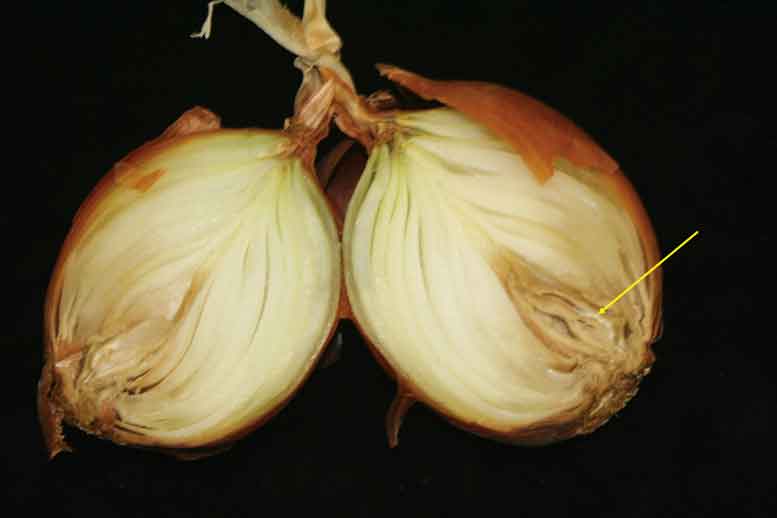The onions have Fusarium basal rot, caused by the fungus Fusarium oxysporum f. sp. cepae. It is a soil-borne pathogen that can infect all Allium species but most commonly causes damage in onion and garlic. Fusarium oxysporum f. sp. cepae is specific to Allium crops.
Onion bulbs are infected through old root scars or wounds caused by equipment and onion maggots or other insects. Optimum soil temperatures for infection are between 77 and 84 degrees Fahrenheit. Generally, resting spores serve as initial inoculum and germinate to infect the basal plate through wounds.

Photo 1 shows above-ground symptoms in the field. Due to the rotting basal plate and reduced root growth, plants cannot absorb adequate nutrients and water to maintain leaf or bulb health. After rotting the basal plate, the fungus migrates into the scales, causing brown discolored tissues (Photo 2). Occasionally, white mycelia can be seen between scales (yellow arrow in Photo 2).

Management options are limited, but resistant onion varieties are available. If the resistant varieties do not have the desired growth and quality characteristics, crop rotation of four or five years out of onion or garlic can reduce disease incidence. In some states, pre-plant fumigation may be an option, as well.
